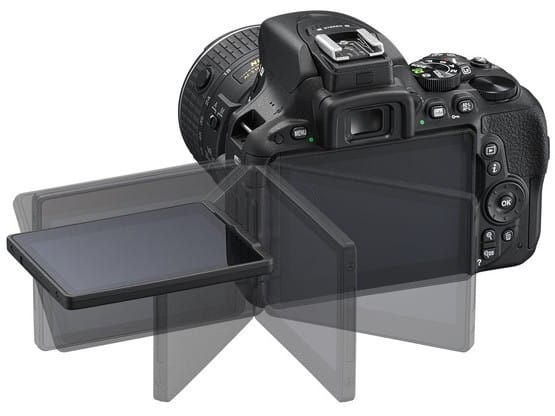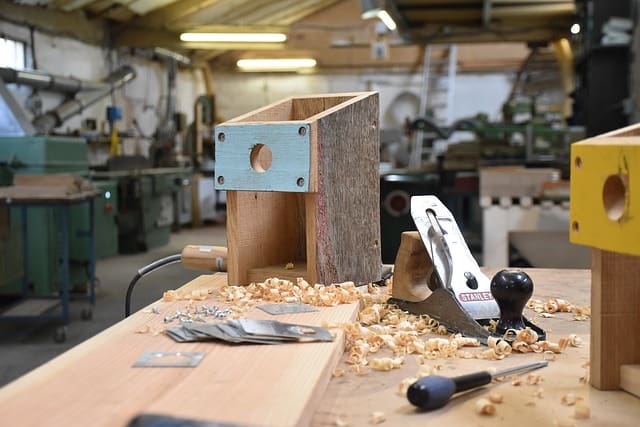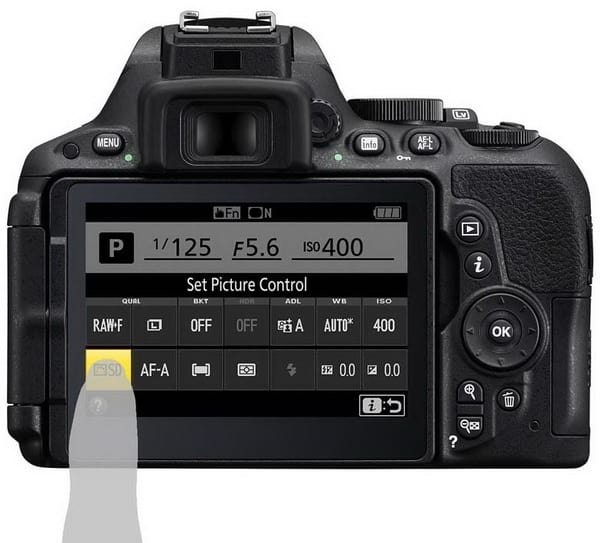Please note: As an Amazon Associate I earn from qualifying purchases. I also work with other affiliate partners and may be compensated from the links below. Details here.
Nikon D5500 Camera Review: Is This DSLR Worth Buying in 2020? (Video + Photos)

Welcome to my updated Nikon D5500 review for 2020!
(With video, sample photos and lens recommendations).
So…
- Is this camera any good?
- Is Nikon D5500 still worth buying in 2020?
My honest opinion:
[amalinkspro type=”image-link” asin=”B00RUBJKU8″ associate-id=”lifinkaisty-20″ new-window=”true” addtocart=”false” nofollow=”true” alt=”Nikon D5500 DX-format Digital SLR w/ 18-55mm VR II Kit (Black)” alignment=”alignright”]https://images-na.ssl-images-amazon.com/images/I/51wB7WzybyL._SL300_.jpg[/amalinkspro]
Reasons you’ll love this camera:
- it’s very lightweight,
- simple to use,
- produces beautiful images,
- has an articulating touchscreen,
… Just to name a few.
Now:
There’s a lot to cover in this review but the main point here is that Nikon D5500 is a small entry-level camera with excellent ergonomics and features that will satisfy most amateur photographers.
Best of all?
It’s equally suitable for most photography styles, stably producing quality images in the traditional Nikon style. Certainly a great beginner DSLR to invest in today.
Nikon D5500 DSLR Camera Review (Video)
Here’s a hands-on video with samples and demos:
Quick specs:
- Type: Compact SLR
- Weight: 420 g
- How many pixels: 24 MP
- Sensor size: APS-C (23.5 x 15.6 mm)
- ISO: Auto, 100 – 25600
- LCD screen: Fully articulated
- Touchscreen: Yes
- Environmentally sealed: No
✓ What you might like about it:
- Has a built-in Wi-Fi
- Excellent rate of fire 5 frames/second
- The presence of a mini HDMI connector
- SD memory card (CF is difficult to insert into the laptop)
- Great battery life, despite the active use of the touch screen
- Interval time shooting. Very useful when photographing fireworks and lightning
- In LiveView mode, you can focus by clicking on the desired point on the touch screen
✕ What you might not like about it:
- Bad focus for videos. If you like shooting videos only, this camera is NOT for you!
- It’s not weatherproof. So, be careful with water and dust.
- There is no panorama mode in this model. Nikon, return it back, please!
- The GPS feature removed. (Location matters for landscape photographers.)
- Remote control via Wi-Fi is very limited. This is where Canon T6i does a better job.
- LiveView mode with old lenses shows one exposure on the screen, and the actual one turns out to be different. Obviously a software defect.
What to Keep in Mind When Buying D5500:
- Has a EN-EL14a battery
- Old Nikon lenses will work without autofocus
- No exposure metering with old lenses without contacts (only in newer models)
- X-sync built-in flash 1/200 sec. (Not great, but you can live with it)
- Minimum shutter speed is 1/4000 sec
- By default, the through numbering of frames is turned off. Turn it on in menu d2, so that you don’t start with frame number 0001 every time you shoot.
? Where to buy online? Check availability and price on:
- Amazon
- B&H Photo Video store (might be replaced with the newer model though)
There Are A Lot of Things to Love About D5500

Truth is…
There really are a lot of advantages to this camera that we’ll further cover in this review.
Like I mentioned earlier, Nikon D5500 is a small entry-level DX-format camera with traditionally excellent ergonomics and features that will satisfy most photographers, not only beginners.
Compared with the previous Nikon D5300 (D5400 was missed due to Japanese superstitions), this one has significantly lost its weight and also decreased in size.
Size and hands:
However, the reduction in size didn’t have negative consequences, the camera is still comfortable to hold, especially if you have small hands.
For our large-handed comrades, this camera will be okay too, but the pinkie finger might slip off the handle.
Anyway, the ergonomics as always at altitude, all the basic settings, including the mode selection wheel (dial), can be operated with one hand.
Note:
The multi-function dial under the thumb became less pronounced and, as it seemed to me, the previous version was more convenient.
(But that’s just a personal opinion).
D5500 LCD Screen And Eye Proximity Sensor
Nikon models D5x00 are always equipped with an articulated LCD screen on the hinge.
Personally, I think this is the most convenient of all the screen options – it allows you to rotate the screen in different angles, without much interference.
(Unlike Nikon D750, for example).
In addition to that, you can fold the screen with the display inward, so you don’t scratch it.
Especially if you travel light and don’t really bother with camera bags.

Nikon D5500 Touchscreen:
Perhaps the main advantage of the Nikon D5500 is the touch screen.
(In fact, some photographers are willing to give up the GPS feature seen in D5300 to have the touchscreen in D5500. Basically that was the trade-off in this Nikon series.)
This DSLR was released in 2015 and at that time, it was a big step forward for them.
Why?
Because most budget cameras always “stood out” with a small number of customizable buttons, and for some popular settings you had to go on a tedious journey through the menu.
That is why, the touch screen in this case really helps, since all the essentials are available with one click.
Thanks to the touch screen, the “i” button has found its meaning, which I didn’t fully understand as a newbie.
By default, the screen displays all your mode settings displayed. And when you press “I” button, it allows you to change a little bit of information displayed on your LCD screen. (See image below.)
This switch thing was created so that when photographing you don’t accidentally click anything with your nose, especially if it’s long.
Eye proximity sensor:
By the way, the developers thought about long noses and equipped the eye proximity sensor. For those who don’t know, basically the screen automatically turns off when you hold the camera to your eye.
This feature was realized in other cameras a while ago, it’s just an important part for cameras with a touch screen.
Now…
With a touch screen, the fine line between “amateur” cameras with the “auto” button and “professional” buttons with a large number of programmable buttons became even thinner.
Here’s the truth:
To justify the purchase of a more expensive model as the first camera these days is more difficult… that’s how Nikon’s entry-level cameras have become so good.
The only thing that still might frustrate you in inexpensive cameras is the inability to assign 100% crop to the central button of the joystick, as done on large cameras.
Many photographers often shoot in series, and then select the best/sharpest shots.
In this case, such a button is necessary, otherwise you’d have to spend a lot of time on too much clicking and the process takes several times longer.
To zoom images by spreading or pulling fingers on the touch screen is completely inconvenient, since there is a small but noticeable delay. Though, good thing that the scale is preserved when turning onto the next frame with a dial.
This Entry Level DSLR Offers Great Ergonomics
I touched a bit on ergonomics in previous paragraphs, and I’d like to talk about it more.
So…
One thing I want to mention is its very quiet shutter. The shutter is especially well heard in the large cameras, including some of the modern ones.
In addition to the screen, in the camera with each generation Nikon does a great job on the DX-sensor.
The resolution has yet to grow, stopping at 24 megapixels but what is improved is its color rendition in artificial light.
Gone are the days when you had to buy a high-speed lens to take photos with the usual room lighting!

Now you can safely grab the camera, even with its kit lens and shoot anything at any light conditions.
In terms of Nikon D5500, I noticed that the frames with ISO 12,800, demonstrate a moderate noise level, are still quite suitable for a family archive.
(Ideally, you’d want to keep your ISO setting at 1600.)
Overall, D5500 is suitable for any life situation. If you get blurred images, then it’s definitely not the camera’s fault.
A note on Auto ISO settings:
By the way, many people forget that in Nikon cameras in Auto ISO settings there is a correction for the maximum shutter speed, after which the sensitivity is switched.
Each photographer needs to adjust these settings (!), since the degree of trembling of hands is different for everyone, depending on the photographer’s mood and his state of health.
In most cases, when you hand held shoot the masterpieces, the ISO will rarely exceed 3200, which is an easy warm-up for D5500.
A Word on Nikon D5500 HDR Mode
Look:
When the sun is completely down, I strongly recommend turning on the HDR mode.
Pro Tip: You’d want to photograph in HDR mode using a tripod, that’s why high ISO and light intensity here don’t play any role, and therefore in night scenery the ISO drops sharply to 100.
Note:
You can view ISO and other parameters of the image in EXIF (exchangeable image file format).

For what it’s worth:
In Nikon cameras, the HDR mode is very successful.
You can try different settings manually, but you will soon realize that the best results are obtained in Auto mode.
The Nikon specialists did a very good job because an image looks so natural that you don’t even realize it was shot in HDR mode.
If there is no object in the frame that “doubles” like a flying bird, for example, you will not even suspect anything.
(Moving objects tend to “double” because the result is stuck together from two consecutive frames.)
When photographing fast-moving children is exactly where your high ISO and short exposures will be useful and highly appreciated by you.
Best settings for Nikon D5500:
- For landscapes, I usually choose saturated colors (Vi) with a slight correction.
- For portrait photography, you can use the neutral (NL) or standard (SD) colors of the Picture Control mode, which is available in the lower left corner of the touch menu.
I will say this…
I love the rich colors Nikon cameras give out. What’s interesting is that the color rendition with good lighting on all cameras is the same regardless of the price.
Best Lenses for Nikon D5500 (Recommendations)
[amalinkspro type=”image-link” asin=”B002JCSV8A” associate-id=”lifinkaisty-20″ new-window=”true” addtocart=”false” nofollow=”true” alt=”AF-S DX Nkr 18-200mm F/3.5-5.6G ED VR II” alignment=”aligncenter”]https://images-na.ssl-images-amazon.com/images/I/51wLW6PdUDL._SL300_.jpg[/amalinkspro]
The Nikon kit lenses are good enough, they can easily shoot and you will have nothing to worry about.
But if you want to make yourself a gift then pay attention to the following value/price ratio lenses:
- All-in-one lens would be Nikon 18-200mm f/3.5-5.6 VR II.
I mean this is the best bang for your buck that you can get. It’s also ideal for travel photography.
- If you’re into portrait photography, get 35mm f/1.8 lens.
It is a low-power, high-speed fix for portraits with shallow depth of field.
- The recommended lens for landscape photography at a low price point is Sigma 18-55mm f/1.8 lens.
I mean it’s incredibly sharp. Make sure you pick it up in a Nikon mount though!
- If you are into macro photography, Nikon 40mm f/2.8 DX Micro lens has best price/value ratio.
If you’re on a bigger budget and want a better lens – Nikon 105mm f/2.8G IF-ED VR Micro lens is for you.
Nikon D5500 vs D5300 vs D3400 vs D7100
I will briefly talk about these cameras as there’s a lot of confusion out there.
Nikon D3300/D3400 vs D5500
While D5500 is a nice little camera, if you already own a D3x00 series DSLR, then consider D7100, for example.
This way, you’ll have:
- better camera controls,
- better autofocus system,
- and a screw drive AF motor (allowing you to use older glass)
Point is…
If you currently own D3300/D3400, don’t upgrade to D5500.
These models are pretty similar, so instead you should consider upgrading to Nikon D7x00 series camera.
Nikon D5300 vs D5500
The image quality and the features are pretty much the same in these 2 cameras.
There are 2 reasons why you’d want to go for D5300:
- its GPS feature,
- it has a smaller price tag.
Overall, D5500 is smaller/lighter than D5300. It also has a touchscreen that was a trade-off for D5300’s GPS feature.
Nikon D5500 vs D5600
Again, these two DSLRs are pretty much the same. Go for the latter if you need the following features:
- bluetooth,
- Snapbridge,
- a slightly improved battery.
Other than that, D5500 has all the necessary features you need and it costs less.
But, of course, the decision is yours.
==> Click Here to Get It from Amazon Today <==
Nikon D5500: A Real Godsend for Amateurs

Here’s the truth:
For novice photographers, the Nikon D5500 will be a real godsend.
Accurate and confident work of the camera in auto mode will give out high-quality images even in the hands of inexperienced amateurs.
As a beginner, you will also appreciate thee presence of built-in filters and the possibility of intra-camera processing. In other words, this camera ability will improve your images even without using a computer.
In favor of the camera also speaks its universality.
I mean, it is equally suitable for most photography genres, stably producing a quality image.
Nikon D5500 Review 2020: Your Thoughts?
To conclude:
I’d like to address most people’s concern and say that even though Nikon D5500 was released a couple years ago, it is still a popular (relevant) DSLR camera in 2020.
Remember that my with this website is to provide accurate information but ultimately, it’s your decision whether this camera is the right fit for you.
Now…
I’d like to hear from YOU:
- Do you currently own any DSLR?
- What are your thoughts on this Nikon D5500 review for this year?
Anything else to add?
Comments and suggestions are welcome in the comments below!
(Click here to jump straight to the comment form).

Great review on the Nikon D5500, Zarina.
As a hobbyist, I’ve been using my D5500 for about 2 and a half years.
And I’m really happy about this little camera. Sure it does not have some of the advanced features from the latest models, such as IBIS and eye focus, but it offers great image quality that is almost on par with the latest models.
The dynamic range and color rendition are very good, I am able to use HDR software to pull tons of details from a single image, then print images in 8′ x 11′ photo papers without seeing any grains at all.
I also love the controls and the feeling of using it. The deep grip feels secure in my hand, and the control dial and buttons are laid out in way that is very easy to reach when changing settings in the exposure triangle.
Recently I’m pretty interested in astro-photography. Do you have recommendation on an inexpensive wide angle lens for the D5500?
I will be upgrading to a full frame camera in the future so I’m not going to spend too much on this lens now, preferably under $500.
Thank you,
Hugh
Hi Hugh,
Thank you for sharing your thoughts/experience with Nikon D5500!
I did notice a lot of people loving the Nikon DSLRs for their great ergonomics, as well as color rendition. I’m glad you’re really enjoying it!
As for the wide-angle lens, I instantly thought of the 10-24mm lens.
Now, it’s over $700, but you could buy used ones for a lot cheaper, at least on Amazon.
Also, an excellent alternative is this Tokina 11-16mm lens that costs less than $500 on Amazon and should be a great option for your budget and your needs.
Hope this helps and let me know if you have any further questions.
(Also if you end up getting a wide-angle lens for your Nikon D5500, I would love to hear your thoughts!)